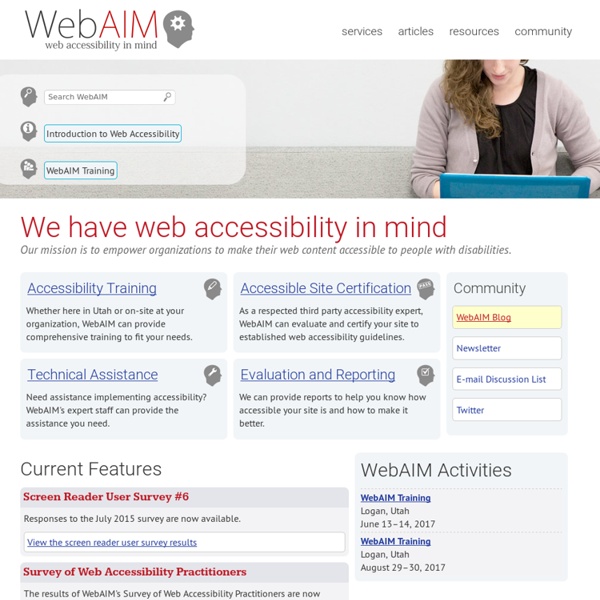



Accessible Rich Internet Applications (WAI-ARIA) 1.0 An element whose implicit native role semantics will not be mapped to the accessibility API. The intended use is when an element is used to change the look of the page but does not have all the functional, interactive, or structural relevance implied by the element type, or may be used to provide for an accessible fallback in older browsers that do not support WAI-ARIA. Example use cases: An element whose content is completely presentational (like a spacer image, decorative graphic, or clearing element);An image that is in a container with the img role and where the full text alternative is available and is marked up with aria-labelledby and (if needed) aria-describedby;An element used as an additional markup "hook" for CSS; orA layout table and/or any of its associated rows, cells, etc. For example, according to an accessibility API, the following markup elements would appear to have identical role semantics (no role) and identical content.
Online Accessibility The power of the Web is in its universality. Access by everyone regardless of disability is an essential aspect. — Tim Berners-Lee SBCTC is committed to providing access to information technology for people with disabilities, including students, employees and the general public. This includes the content of this website. The Washington state community and technical college Accessible Technology Policy: Vision, Mission, Policy Statement and Recommendations for Adoption was approved by the Washington State Board for Community and Technical Colleges in March 2016. The policy outlines the system-wide commitment to provide equal, effective, and meaningful access to the benefits of technology for individuals with disabilities
Public domain image resources Public domain image resources is a copy of the master Wikipedia page at Meta, which lists a number of sources of public domain images on the Web. Public Domain images should be marked with the Public Domain Mark 1.0. Public Domain Mark enables works that are no longer restricted by copyright to be marked as such in a standard and simple way, making them easily discoverable and available to others. The Public Domain Mark is recommended for works that are free of known copyright around the world. These will typically be very old works.[1] For a creator to release his/her works into the public domain legally they must use the creative commons CC0 license which gives creators a way to waive all their copyright and related rights in their works to the fullest extent allowed by law.[2] The presence of a resource on this list does not guarantee that all or any of the images in it are in the public domain.
Web Content Accessibility Guidelines You are here: Home > Articles > The Web Content Accessibility Guidelines A WCAG 2.0 Checklist is available for developers to use in implementing and verifying conformance with WCAG 2.0. The W3C's Web Accessibility Initiative The W3C is an international, vendor-neutral group that determines the protocols and standards for the web. They create the specifications for HTML, CSS, etc. A primary initiative of the W3C is to develop accessibility standards. Raakt - The Ruby Accessibility Analysis Kit - RAAKT Raakt is a web accessibility analysis tool that makes it easy to integrate basic accessibility evaluation early in the development process. This means that you will save time (and money) as basic technical accessibility issues can be caught automatically as part of your automated test procedure. What separates Raakt from other accessibility evaluation tools is that only Tests that are machine verifiable are included. The emphasis is on finding inaccessible stuff.
Accessible Rich Internet Applications (WAI-ARIA) 1.0 This version: Latest version: Previous version: Editors: Accessibility within Canvas Ensuring an accessible and pleasant experience to all users, regardless of disability, is a key focus of Canvas. The Canvas platform was built using the most modern HTML and CSS technologies, and is committed to W3C's Web Accessibility Initiative and Section 508 guidelines. The Voluntary Product Accessibility Template, or VPAT, is a tool that administrators and decision-makers can use to evaluate Canvas' conformance with the accessibility standards under Section 508 of the Rehabilitation Act.
HSL Color Picker - by Brandon Mathis HSL (Hue, Saturation, Luminosity) allows us to describe meaningful relationships between colors. Give this brown color, hsl(36, 73%, 10%), it's clear that if we desaturate 40 steps and lighten 70 steps we get hsl(36, 33%, 80%), a cream color. Look at that in hex, #2C1D07 to #DDCFBB, or in rgb, rgb(44, 29, 7) to rgb(221, 207, 187), and the relationship between colors isn't evident in any meaningful way. In graphics software I pick colors in HSB (Hue, Saturation, Brightness) because it feels more natural to work with than RGB or CMYK. Now, with CSS3 we can use HSL which is actually quite different than HSB. Without a decent HSL color picker, it's difficult to understand. Web Content Accessibility Guidelines (WCAG) 2.0 This publication has been funded in part with Federal funds from the U.S. Department of Education, National Institute on Disability and Rehabilitation Research (NIDRR) under contract number ED05CO0039. The content of this publication does not necessarily reflect the views or policies of the U.S. Department of Education, nor does mention of trade names, commercial products, or organizations imply endorsement by the U.S. Government.
This website will check websites set-up to make sure all information presented is is able to be read from a screen-reader. by obermemd Jan 30